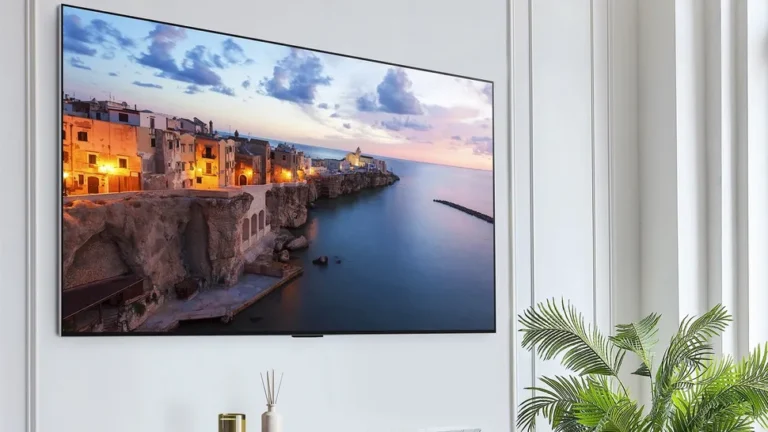Are you prepared to replace your current TV with one of the best Tv ? These smart TVs will provide the visual experience you’ve always wanted.
Finding the best TV can be challenging because there are a growing number of models with complex screen technology and feature-rich menus. Fortunately, there has never been a better time to enjoy a top-notch home theater at an accessible price.
Based on our in-depth testing experience with these sets, it is our responsibility to assist you in finding the best TV within your price range. We’ll narrow down the voluminous selection of possibilities to only the best ones, including both affordable and state-of-the-art flagship sets.
The best TVs for overall excellence are those that balance features, sound quality, price, size options, features, and picture quality (which is evaluated both objectively and subjectively). You may have a general idea of all the best models, including those from these categories (and more), by going straight to our recommendations for the best gaming TVs, the best TVs under $1000, or the best OLED TVs if you’re searching for something special.
Over the years, we have reviewed every type of TV, including the best 85-inch models currently available as well as the first flatscreens and OLEDs. This implies that we are aware of the features that are most important and how to get the best value for your money when purchasing a TV. This guide should help you pick the best TV for your needs, regardless of your budget, preferences for content, or preferred location for watching it.
2024’s Best TV
Why OnlyTechSpot is reliable: We put hours of testing into each product or service we review, ensuring that you’re getting the best deal possible.
You may read detailed reviews of every TV on our list of the best ones below. We have thoroughly tested each one, so you can be certain that our suggestions are reliable.
1. Samsung S90C
With its outstanding picture quality, stylish design, outstanding gaming performance, and the lowest price ever for QD-OLED technology, the Samsung S90C is the clear winner on our list of the best TVs. This offers you the best OLED value for your money because prices are also declining with time.
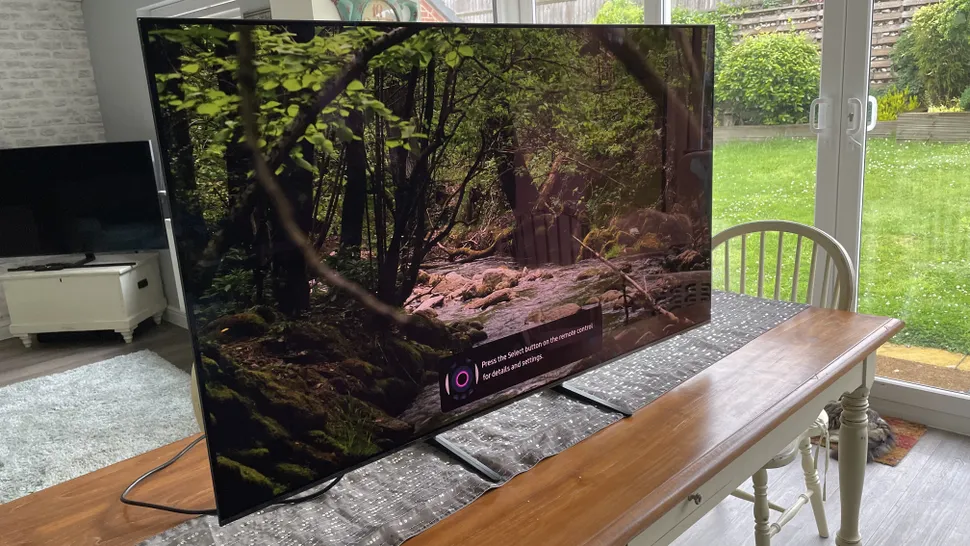
Despite these TVs all costing the same, we observed in our review that the S90C’s increased brightness compared to the LG C3 (lower down this list) or Sony A80L truly adds an extra layer, even with the high contrast levels, dramatic and vibrant colors, and deep, rich blacks that we come to expect from an OLED. Its detail and degree of crispness are equally astounding. However, it should be noted that the 83-inch variant has a normal OLED screen, which is significantly less bright. For this reason, we advise purchasing the 83-inch LG C3.
The Samsung S90C is not only a stunning TV—it’s a gaming haven. It features four 2.1 HDMI connections that support 4K 120Hz, VRR, and ALLM, and has a refresh rate of 144Hz. Additionally, it features a gaming hub that makes it simple to adjust settings and maximize game performance. With the S90C, you get a comprehensive package that includes built-in sound quality that surpasses that of nearly all other TVs, including LG’s OLED models.
While the lack of Dolby Vision support is unfortunate, it isn’t flawless, and more expensive OLEDs like the LG G3 and Samsung S95C (ranked #4 on this list) can outperform it in terms of brightness. However, the Samsung S90C is the best TV for most people and offers great value for the money given this budget range.
2. Series Roku Plus
A low-cost TV that offers very good overall picture quality that surpasses its price point is the Roku Plus Series. When paired with an excellent smart TV interface, the Roku Plus Series is a viable choice for those on a tight budget searching for a new television.
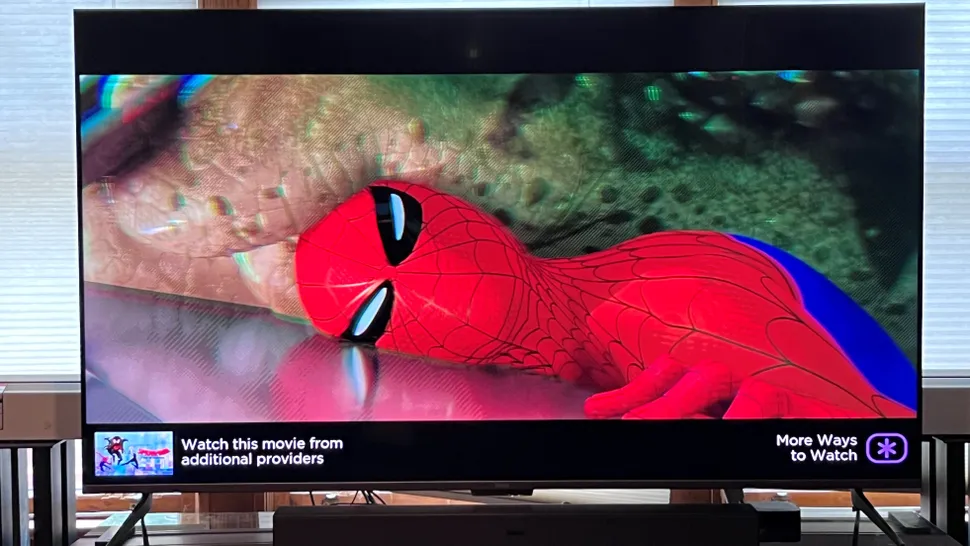
The true standout feature of the Roku Plus Series is the picture quality. Vibrant colors have a powerful visual impact. Additionally, motion is processed effectively; images appear clear and crisp, and quick-panning views don’t suffer from the blurring that many low-cost TVs have. Though the Roku Plus Series has average brightness levels and isn’t the best for brighter viewing conditions, the picture quality is still good for the price. The only drawback is that the picture quality is somewhat worse when seen off-center.
One of the finest smart TV interfaces is the Roku TV smart TV platform, which is integrated into the TV. It has a ton of app possibilities, is simple to use, and even has the Roku Live TV gateway, which gives users access to a ton of free channels. Although Roku TV is still one of the best smart TV platforms, it should be noted that accessing visual settings on the Roku Plus Series might be difficult.
Though it lacks support for 120Hz gaming and cloud-based gaming possibilities, the Roku Plus is still a great-looking TV with good features and a top-notch smart TV platform for the money. However, its built-in audio isn’t the best, so a speaker may be necessary.
3. Hisense U8K
The Hisense U8K is a mid-range winner thanks to its superb picture quality, outstanding gaming features, and extremely cheap price. The Hisense U8K is a fantastic daytime watch because of its mini-LED screen. It also has Google TV preinstalled, which is a smart TV platform that is generally well-designed and full of practical streaming apps.

Despite using a mini-LED screen designed for higher brightness levels, the Hisense U8K manages to provide deep black tones in its image as well. Although its contrast may diminish when viewed from an angle, the U8K is still a great viewing companion if your space is naturally bright due to its high peak brightness levels (we measured 1,590 nits) and anti-glare coating.
The U8K is an excellent gaming TV as well. Its two HDMI 2.1 connections support Dolby Vision gaming in addition to the standard VRR and ALLM functionality. Its crucial 120 Hz refresh rate is also supported. For the best settings in your video games, there’s also a game mode incorporated.
The Hisense has good audio and design as well, with adjustable feet from a design perspective and respectable bass and dialog clarity for the former. Even though the Hisense U8K isn’t the ideal TV, for the amount it costs, it fits a lot of people’s budgets and has a ton of extra features.
4. Samsung S95C
The Samsung S95C is a revolutionary device. It’s by far the brightest OLED TV we’ve evaluated thus far; in our testing, it outperformed earlier QD-OLED screens in terms of peak HDR brightness by 40%. We measured it at 1,400 nits, so you can see why it’s so intriguing—and pricey—when you contrast it with the LG C3’s 820 nits. Because of its extreme brightness, it can appear more realistic, and the contrast between light and dark is significantly more pronounced.
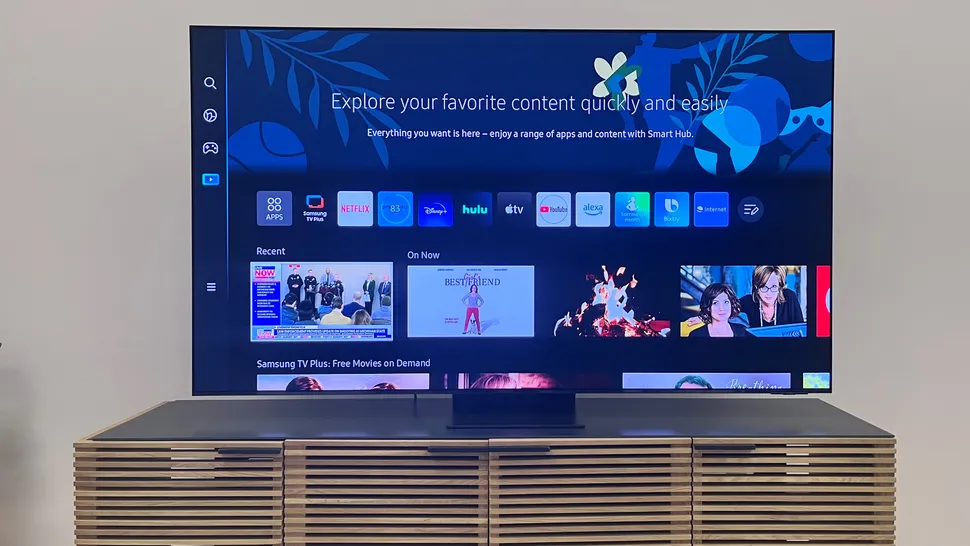
Not only is it a remarkable advancement for OLED TVs, but there are other astounding aspects as well. During our testing of the S5C, we stated that it is “particularly effective in taking high dynamic range video to a whole new level of enjoyment, drama, and realism, but also feeds gloriously into the S95C’s colors, unlocking new levels of color volume and purity, even in bright color areas we’ve never seen before on an OLED TV.”.
In addition, it has HDMI 2.1 connectivity, a ton of gaming capabilities, and a best-in-class response time of 9.2 ms when gaming. Even the sound quality is decent, although you should really use this in conjunction with a competent sound system of some sort.
Why isn’t it at the top of the list, given all of this and its great gameplay performance? The top spot on the list belongs to the Samsung S90C, the S95C’s less expensive twin. Although the S90C isn’t nearly as brilliant as the S95C, it is still very affordable and has excellent all-around performance. But don’t get us wrong—the S95C feels exactly as high-end as it ought to.
5. Samsung QN900C
While 8K may sound like a lot, the Samsung QN900C can undoubtedly be a step up if you plan to purchase a large-screen TV and feed it with high-quality 4K images (because 8K movies aren’t available now). The set provides an amazing visual experience, driven by its exceptional color, dazzling brightness, amazing sound, and remarkable black tones, all housed in an unparalleled design package.
Samsung’s mini-LEDs, which are only 1/40th the thickness of a standard LED, are packed more densely, providing more dimming zones and more accurate black tones, as well as a superior overall contrast.
This boasts one of the most sophisticated mini-LED screens to date, and the true value lies in the increased quality. Samsung’s AI upscaling, which can take 4K images and make them appear more like 8K resolution, does magic here. Put simply, if the source photos are high quality to begin with (HD video or low-bitrate streaming isn’t that transformational), the QN900C can reliably output images that appear better than their source.
However, compared to Samsung’s top-tier 4K TVs, which are almost identical in terms of brightness and contrast (like the QN90C, further down this list), you’ll pay a hefty premium for this. Nevertheless, you also get amazing built-in sound, top-notch gaming features, and a wonderful One Connect box that consolidates all the connections into a single, neat box and uses only one wire to power and display the TV’s images.
6. LG B3
The LG B3 offers an entry-level alternative to 2023 OLEDs now that its costs have finally dropped without sacrificing gaming performance or picture quality. Its qualities are comparable to many other OLEDs available on the market, and you can have luxurious image quality for a lower price.

The B3’s picture feels more expensive than its price tag because of its excellent contrast levels, deep blacks, and vibrant colors. It supports Dolby Vision HDR, and when it’s used, movies and TV shows look amazing. However, the LG C3, Samsung S90C, and even the Sony A80L outperform it in terms of brightness levels. In moderately controlled settings, it still manages reflections well, but in bright room viewing situations, like watching sports throughout the day, the Samsung QN90C (ranked #7 on this list), for example, will be considerably more noticeable.
The LG B3, equipped with LG’s Game Optimizer function, is a true gaming dark horse. You can truly customize your gaming experience to the game you’re playing thanks to the numerous configuration options available while you’re playing. Moreover, it supports VRR, ALLM, 4K 120Hz, and Dolby Vision gaming. For the more laid-back among us, the fact that this is only available on two of its four ports is a touch disappointing, but still acceptable.
There’s enough here to make the LG B3 a real contender if you’re looking to upgrade your TV and take a look at OLED technology, even though the B3’s built-in sound system is distinctly average and its stand feels cheap in comparison to its price.
7. Samsung QN90C
TVs from Samsung’s QN90C series use a mini-LED backlight, which provides more precise local dimming in addition to greater brightness than LED or QLED panels. The QN90C performs admirably in terms of portraying the deepest shadows, even though it falls short of the company’s flagship QN95C in terms of OLED-like heights. The QN90C’s anti-glare screen, combined with its great brightness, makes it an excellent TV for watching sports during the day.
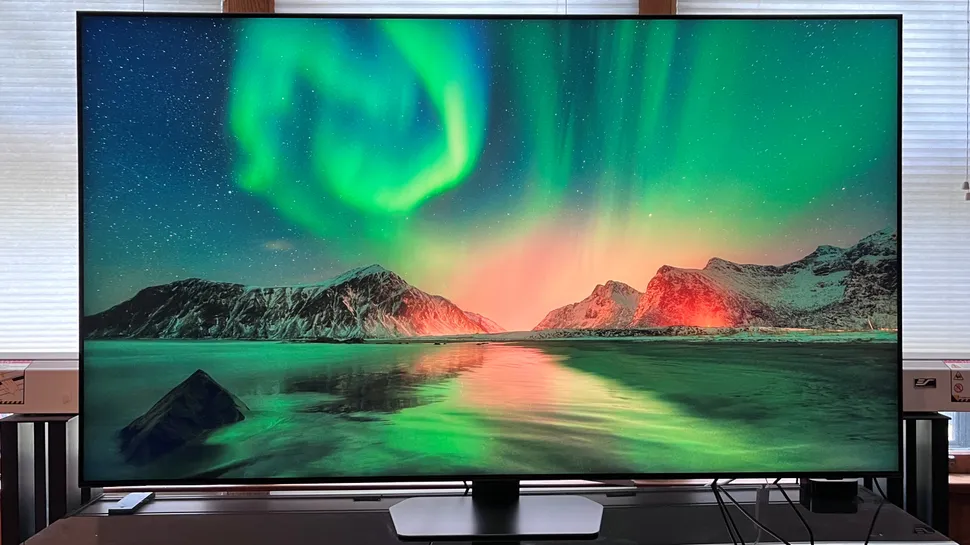
Samsung Neo QLED TVs are very good for gaming, and the QN90C model supports 4K at 120 Hz and includes four HDMI 2.1 connectors. Additionally, there is the Samsung Game Hub, which provides cloud-based gaming from Xbox, Amazon Luna, and Utomik.
When it comes to audio performance, the QN90C outperforms other TVs. Its Object Tracking Sound Plus feature improves the directionality of effects found in movie soundtracks. In order to enjoy a more expansive and dramatic audio experience, you may combine the TV with specific Samsung soundbars using the Q-Symphony technology offered by the business.
While you can find less expensive mini-LED options from companies like Hisense and TCL, you won’t get the same features or picture quality as the Samsung QN90C.
8. LG C3
When it comes to features, the LG C3 hits many of the mark; it boasts excellent picture quality, a plethora of gaming and smart TV options, and a range of sizes to fit any kind of need, be it a new PC monitor or a large screen that you want to take up most of your wall for a cinematic viewing experience.
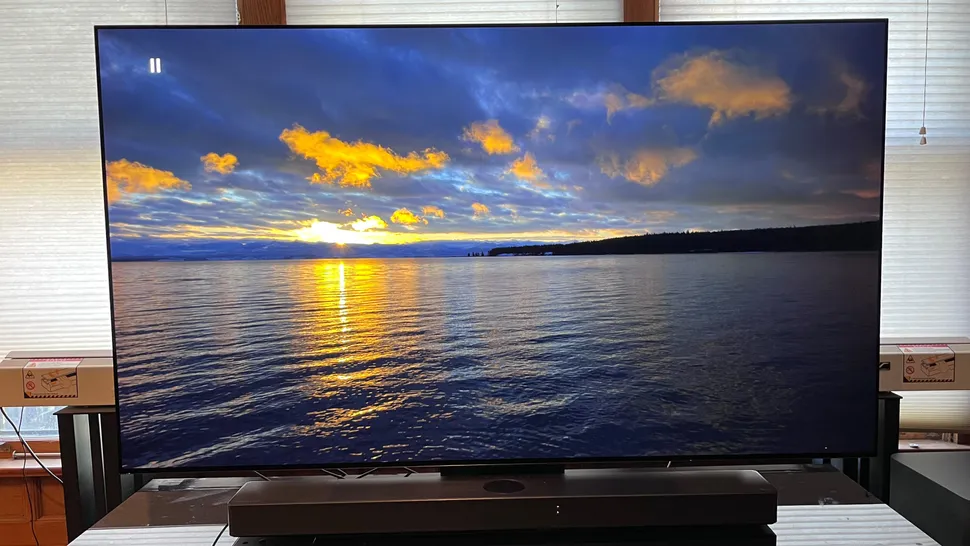
When watching movies or TV shows, the LG C3’s sharp picture quality and deep black depths provide for an amazing visual experience. The picture was “perfectly crisp,” and the colors “look bright without being garish,” as we mentioned in our review. Additionally, there’s not much need to adjust the picture settings—the LG C3 has excellent out-of-the-box visuals, but if you want to play around, there are many customization options.
With support for AMD FreeSync, Nvidia G-Sync, Dolby Vision, VRR, ALLM, and 4K 120Hz across all four of its 2.1 HDMI ports, this device is loaded with gaming features. With Game Optimiser, you can experiment with the settings to fine-tune your C3 gaming experience. Additionally, every gamer in the living room and bedroom should be covered thanks to the large selection of sizes available, ranging from 42 to 83 inches.
The LG C3 is undoubtedly a flexible TV with a plethora of features and settings. Though it costs the same as the LG C3, the Samsung S90C, one of the C3’s main competitors, wins best overall TV because of its superior integrated sound system and increased brightness. However, it’s difficult to argue against the LG C3 if you’re not a fan of Samsung or if you require something smaller than 55 inches.
9. A80L Sony
The mid-range OLED TV in Sony’s 2023 portfolio that offers full-bodied, rich audio quality is the Sony A80L. With its speaker positioning and Acoustic Surface+ technology, the A80L’s integrated sound is snappy and powerful, making you feel completely immersed in the action on screen. The audio is direct and room-filling all at once since sound is permitted to pass through the screen itself. Even with several subwoofers, the bass levels are not very high, but this is still among the best TVs available for sound right now.
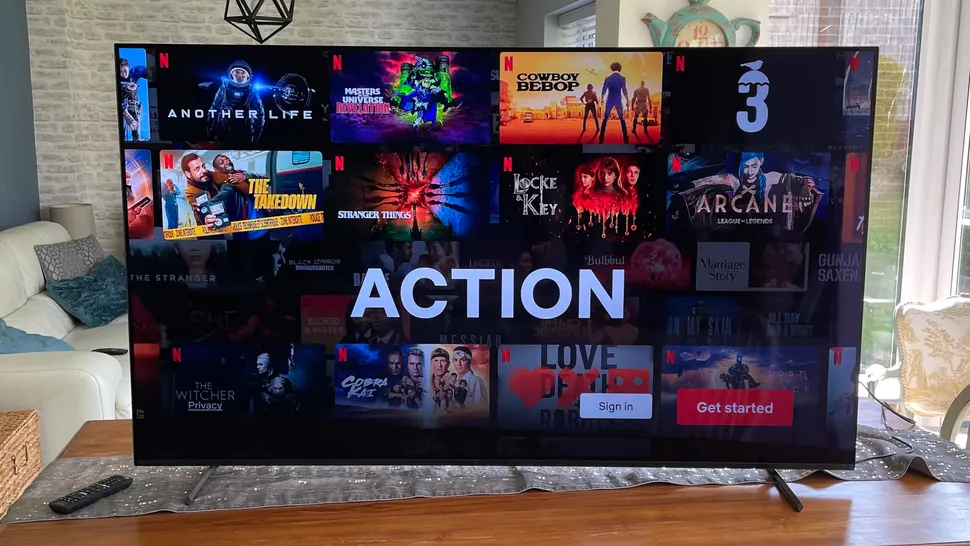
In addition to having a fantastic sound system, the Sony A80L has superb picture quality. The A80L produces sharp images for 4K and upscaled HD movies and TV shows with amazing clarity and detail. Additionally excellent is the color handling on the A80L, which we described as “mesmerizingly precise” in our assessment. However, compared to our top selection of OLEDs, which includes the Samsung S90C at number one on the list, the A80L has lower brightness levels.
Good gaming features like 4K, 120Hz, VRR, and ALLM compatibility are also available on the Sony A80L. Unfortunately, it only has two HDMI 2.1 connections, whereas Samsung and LG TVs will have four, and it isn’t compatible with Dolby Vision gaming at 120Hz, which LG’s mid-range OLEDs have been able to offer since 2021. But it does include ‘Perfect for PlayStation’ features, which include a dedicated HDR setting for the PS5 and personalized picture presets for certain game genres.
Though it costs a little more than comparable entry-level or mid-range OLEDs, like the LG C3, the A80L’s outstanding picture and sound quality will not let down Sony enthusiasts.
What is the best TV for me to choose?
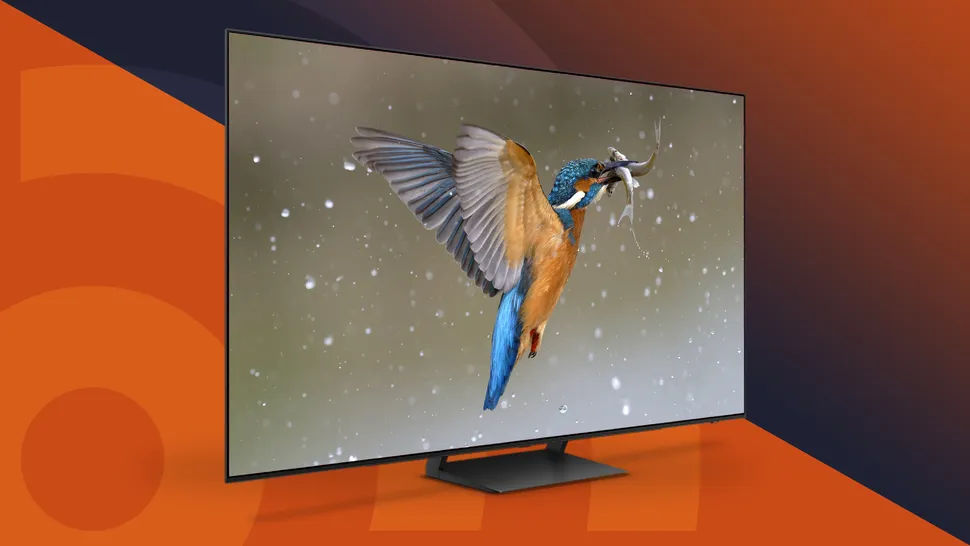
When purchasing a new best TV, there are many factors to take into account, but not everyone needs to become an expert in technology. Here’s what our editors typically advise the many people who approach them with this question in person.
Establish your size and budget first. After deciding on the maximum amount you’re ready to pay and the best TV size you desire, you can focus your search on models that meet both of those requirements. It will become much easier to gain control when you realize that you are only considering a small number of choices. If your budget is really large, establish a minimum budget for yourself as well, perhaps 30% less than your maximum.
The location in which you install your TV can have a significant impact on its size because the same TV might appear differently in both settings when mounted on a stand or one of the best TV wall mounts.
Thus, you will now have to decide on a few more things. Do you prefer an OLED TV or an LED/mini-LED TV if you’re looking at mid-range or premium models? LED TVs are fantastic for viewing sports or TV during the day in bright spaces because they tend to be brighter than OLED TVs when they reach sizes up to 55 inches. OLED TVs, however, are the best for movie nights because of their unparalleled contrast; until you purchase the most costly models, they just don’t get as bright as LED TVs.
You’ll need to determine whether or not you require a 120Hz screen before purchasing a mid-range set. This is fantastic for movies because it can display more realistic motion, and it’s terrific for gaming (especially for those who own a PS5 or Xbox Series X). However, since 120Hz TVs are always more expensive, purchasing a 60Hz TV can be a better option if you want to save money.
After that, give it some thought. The majority of modern slimline TVs have subpar built-in audio. Don’t worry about this if you don’t mind purchasing one of the best soundbars in addition, or if you already own one. However, if you don’t want any additional devices in your setup, pay attention to the TVs we’ve suggested, where we say the audio quality is better. Regretfully, higher-end sets typically perform better at this; however, not all of them are made equally. However, Sony and Samsung are excellent places to start because they often excel in audio.
In 2024, which TVs will be available?
Many intriguing new TVs from LG, Samsung, and other companies are rumored to be arriving in 2024. We’ll be sure to update this guide after we’ve had a chance to test them.
The Samsung S90D, the follow-up to our TV of the year, the Samsung S90C, boasts two new sizes: 42 and 48 inches (although it isn’t QD-OLED). Samsung has also unveiled its full new best TV lineup, which includes the flagship Samsung S95D with new anti-glare technology. Additionally, there’s the Samsung QN90D mini-LED.
The LG G4, the company’s mid-range OLED that claims over 1,000 nits of peak brightness and, based on my observations in person, retains the brightness boost from the LG C3 from the previous year, is part of the portfolio that LG has also confirmed for 2024. The LG M4, a wireless OLED, is another option.
It’s not only about LG and Samsung, of course. The best TV lineup for 2024 was revealed by TCL, and it included a 115-inch mini-LED with 20,000 local dimming zones. A 110-inch TV was also introduced by Hisense as part of their 2024 mini-LED-heavy TV lineup.
Since Sony usually makes its announcements later in the year, none have been made as of yet, but we’ll keep you informed as soon as we do. Like with all of these TVs, we’ll update this guide with our thoughts as soon as we have firsthand experience with them.
What is the best-quality television?
Depending on how you define quality, yes. When choosing the TV that’s best for the majority of people at any given price, we search for the perfect balance of picture quality, features, design, and affordability. For this reason, the Samsung S90C tops our list; while some best TV perform specific tasks more effectively than others, none perform as many tasks as the Samsung S90C does at the same price.
For us, the best premium OLED available is the Samsung S95C, which is the more expensive brother of the Samsung S90C. However, when compared to the S90C, the S90C offers superior value overall.
In 2024, which brand of TV will be the best?
While no single brand is better at making best TVs than the others, several TV manufacturers accomplish certain things better than their competitors.
On our list, Hisense, LG, Samsung, Sony, TCL, and Vizio are a few of the best brands. Even though they all release a large number of models each year, they are often the best-performing brands in the luxury segment.
Right now, the Samsung S90C is the best TV listed on our guide because of its superb picture quality and good value for the price. Samsung has made a name for itself as a serious competitor for the best OLED TVs with its foray into the QD-OLED space, of which the Samsung S90C is one. The equally remarkable Samsung S95C provides outstanding performance and picture clarity. Samsung’s dynamic mini-LEDs are still available and should work well for most individuals in bright conditions.
Excellent OLED TVs are also produced by LG; in fact, LG Display provides the OLED panels for the majority of other companies. We appreciate that LG provides a large selection of TVs in a variety of sizes and price points; the LG C3 is available in 42-inch and 83-inch screen sizes. One of our favorites is LG’s WebOS, a straightforward and user-friendly operating system.
Another significant player in the TV market is Sony. Its screens have excellent build quality and picture quality. However, there is a broad variation across the board, just like with other companies on our list. One noteworthy distinction with Sony is that it has made a big push for its Cognitive XR processor, a processing engine that will be included in TVs starting in 2021 and will improve audio and picture quality.
Naturally, these four brands shouldn’t limit you; Panasonic, for example, provides superb luxury TVs with an emphasis on image quality, while Hisense and TCL provide good value at the mid-range and lower end of the market.
Is QLED or OLED superior?
One of the most important and divisive TV technology questions at the moment is this one. Fortunately, we’ve gone over everything in our OLED vs. QLED comparison guide.
In essence, though, QLED is a terrific choice for brightness if you plan to watch in bright, sunny light; on the other hand, OLED TVs, provided you have control over the lighting, offer improved contrast and better viewing angles for stunning visuals that resemble movies.
Is OLED inferior to 4K?
Fortunately, you can have both OLED and 4K, so you don’t have to choose between the two! OLED refers to the panel technology, or what the pixels are composed of, whereas 4K refers to the resolution, or the quantity of pixels on the screen.
Thus, you have the option of 4K displays that are QLED, mini-LED, or other technology, or nearly all of them that are OLED (aside from very expensive 8K OLED TVs).
Does LG outperform Samsung?
You really can’t go wrong with either the LG or Samsung TV brands; they are both terrific options. But in certain situations, one TV manufacturer might be a better choice than the other.
Although Samsung leads the market in total sales, LG TVs rank highest in our list of the best TVs. LG’s OLED panels offer the best color and contrast available right now, regardless of price, if you’re searching for the best picture quality available.
However, Samsung TVs are very brilliant, especially the more reasonably priced versions. We particularly adore Samsung’s lifestyle sets, which combine performance and style beautifully in The Frame QLED 4K TV (2022). Additionally, its less expensive TVs are typically very affordable.
Get daily insight, inspiration on onlytechspot.com
